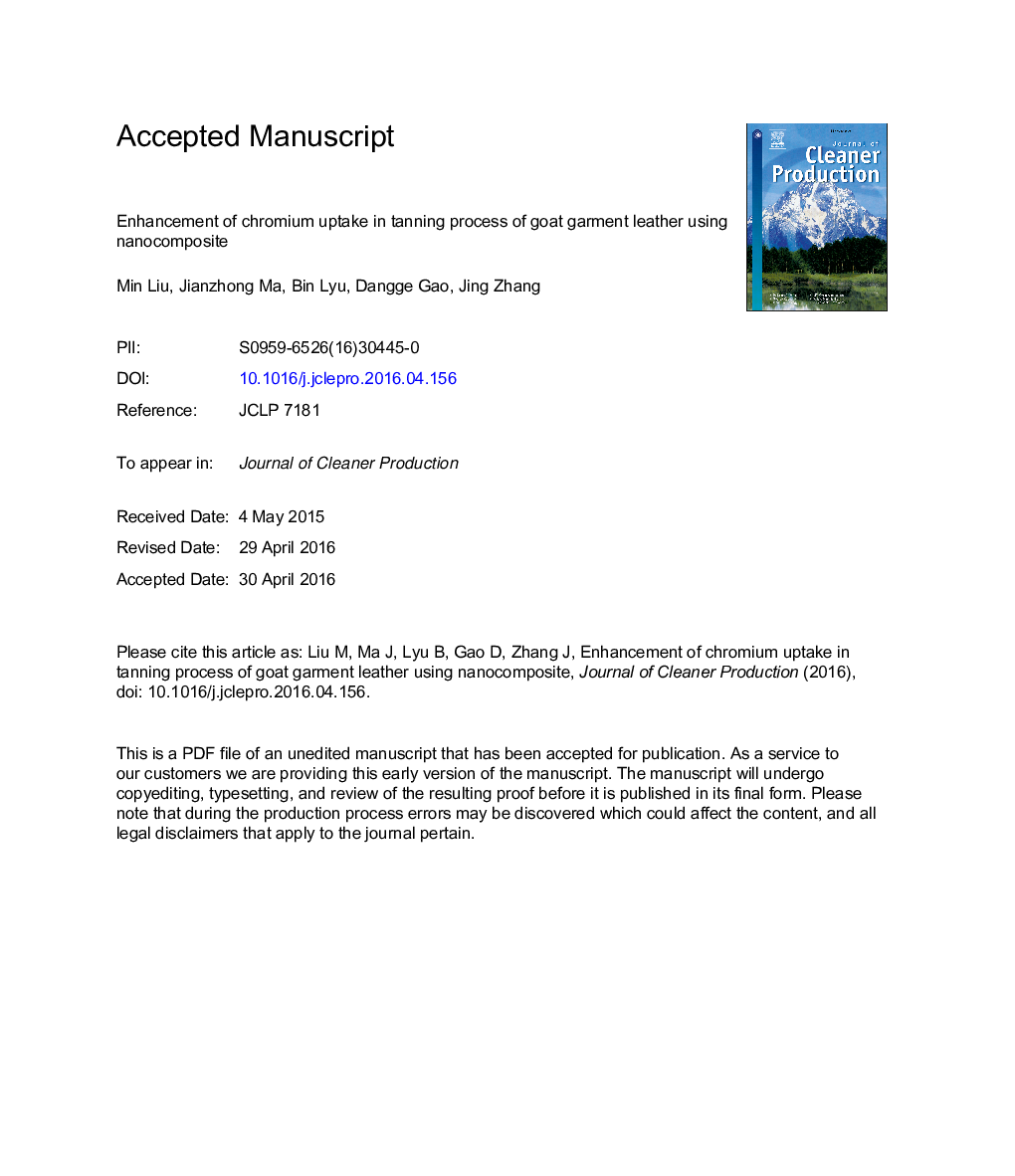| Article ID | Journal | Published Year | Pages | File Type |
|---|---|---|---|---|
| 8101624 | Journal of Cleaner Production | 2016 | 35 Pages |
Abstract
In the present study, a greener approach to tanning process based on nanocomposite assisted chrome tanning has been attempted. Nanocomposite was offered prior to basic chrome sulfate of chrome tanning process during goat garment making. It was found that the shrinkage temperature of the wet blue tanned by nanocomposite associated with less chrome was above 100 °C and the Cr2O3 content in tanning wastewater of nanocomposite associated with less chrome systerm decreased to 165.6 mg/L which brought about better chromium uptake and reduction of chromium load in the wastewater compared to where the 3% and 8% chrome was offered alone. The mechanical properties of crust treated with nanocomposite were close to those of the crust tanned by 8% chrome and the addition of nanocomposite could endow crust with good handle feeling, filling property and softness. The scanning electron microscopy and atomic force microscopy showed that the grain surface of the crust treated with nanocomposite was flat and smooth. The scanning electron microscopy analysis also indicated that the crust treated with nanocomposite contained well-dispersed fibrils and did not destroy the microstructure of collagen. Additionally, The energy dispersive spectrometer analysis revealed that the nanocomposite associated with less chrome tanning process also afforded uniform distribution of chromium in the leather. More specifically, the significant reduction in biochemical oxygen demand, chemical oxygen demand in the wastewater and appeared that suspended solid in the effluent when compared to tanning with 3% and 8% chrome alone conventional tanning method were revealed from environmental impact assessment studies. Most importantly, nanocomposite could bring about the enhancement of chrome uptake, resulting in environmental, economic and social positive impacts to accelerate the sustainable development of leather industry.
Keywords
Related Topics
Physical Sciences and Engineering
Energy
Renewable Energy, Sustainability and the Environment
Authors
Min Liu, Jianzhong Ma, Bin Lyu, Dangge Gao, Jing Zhang,
